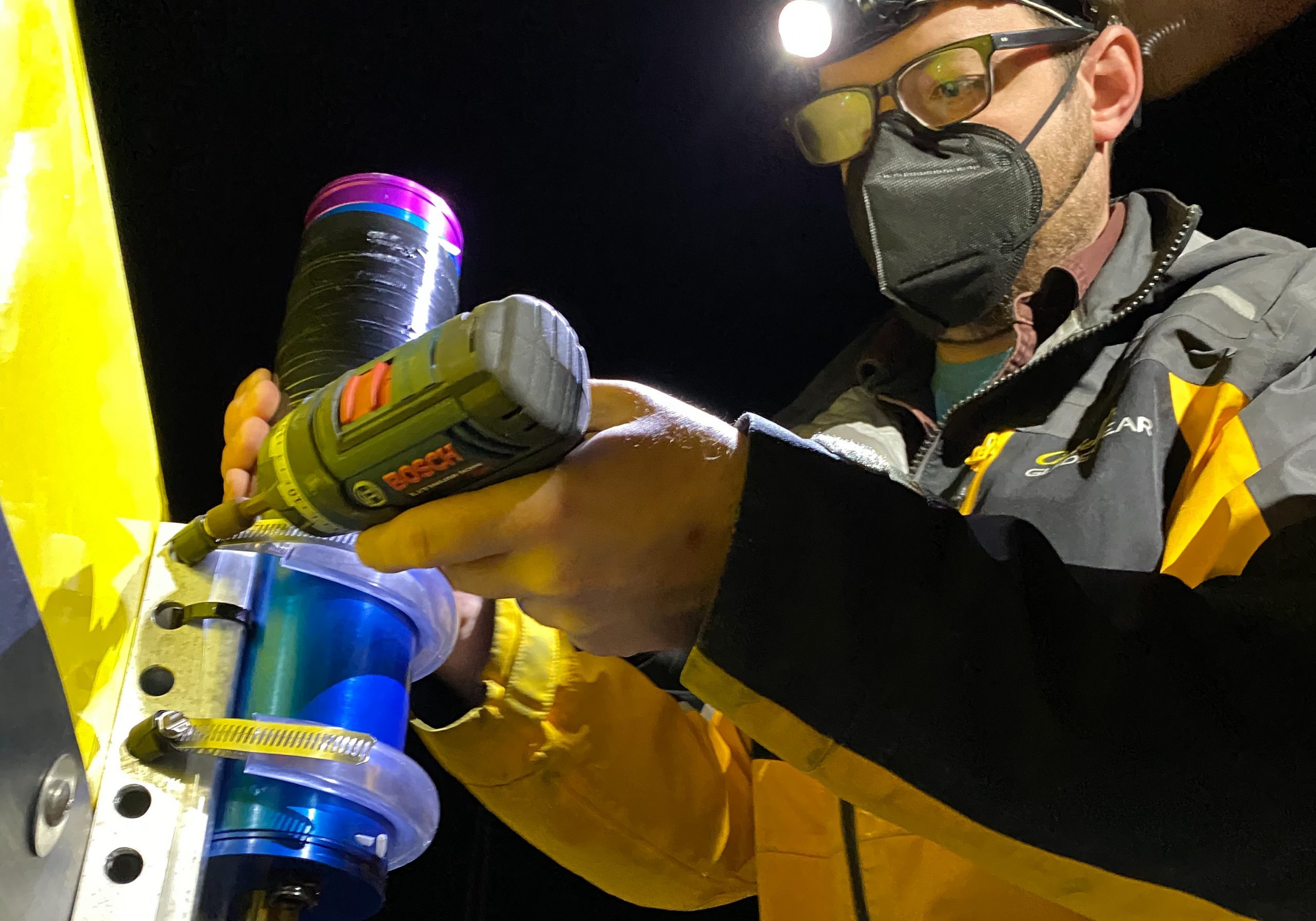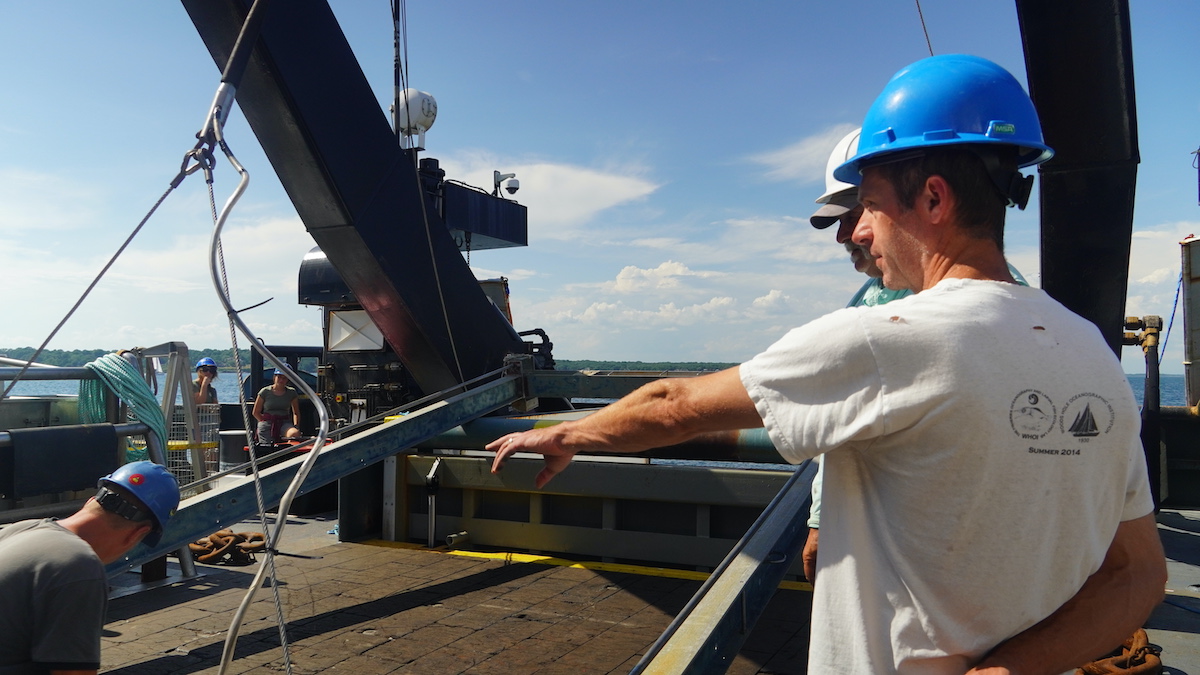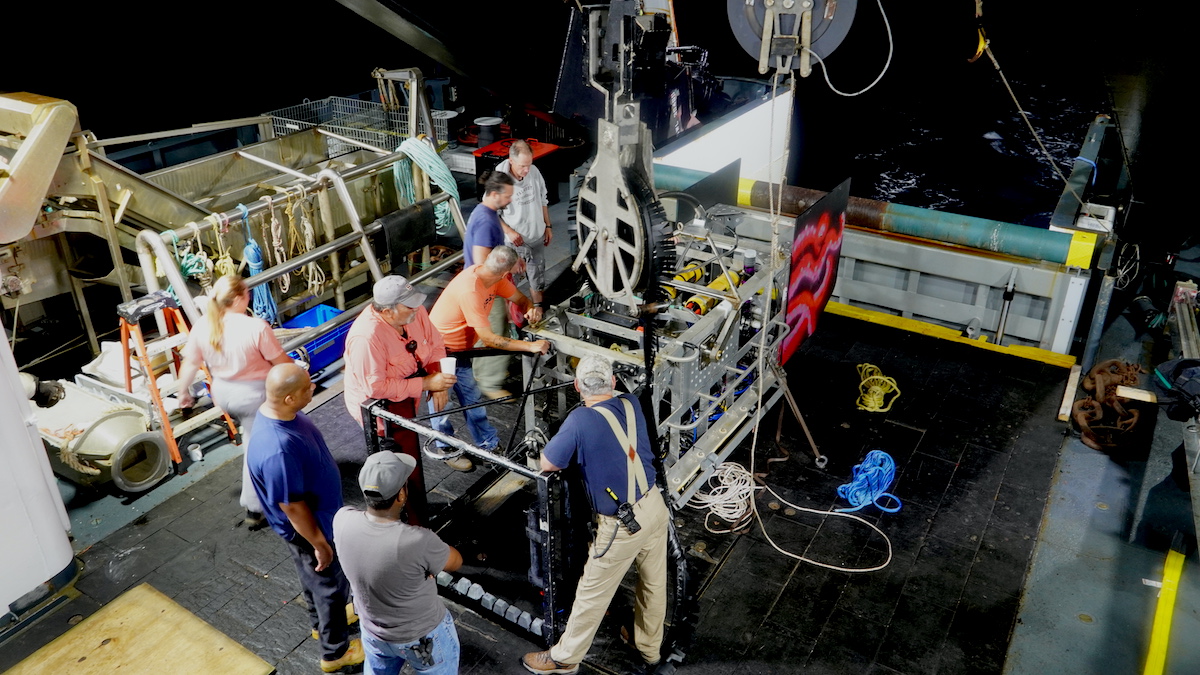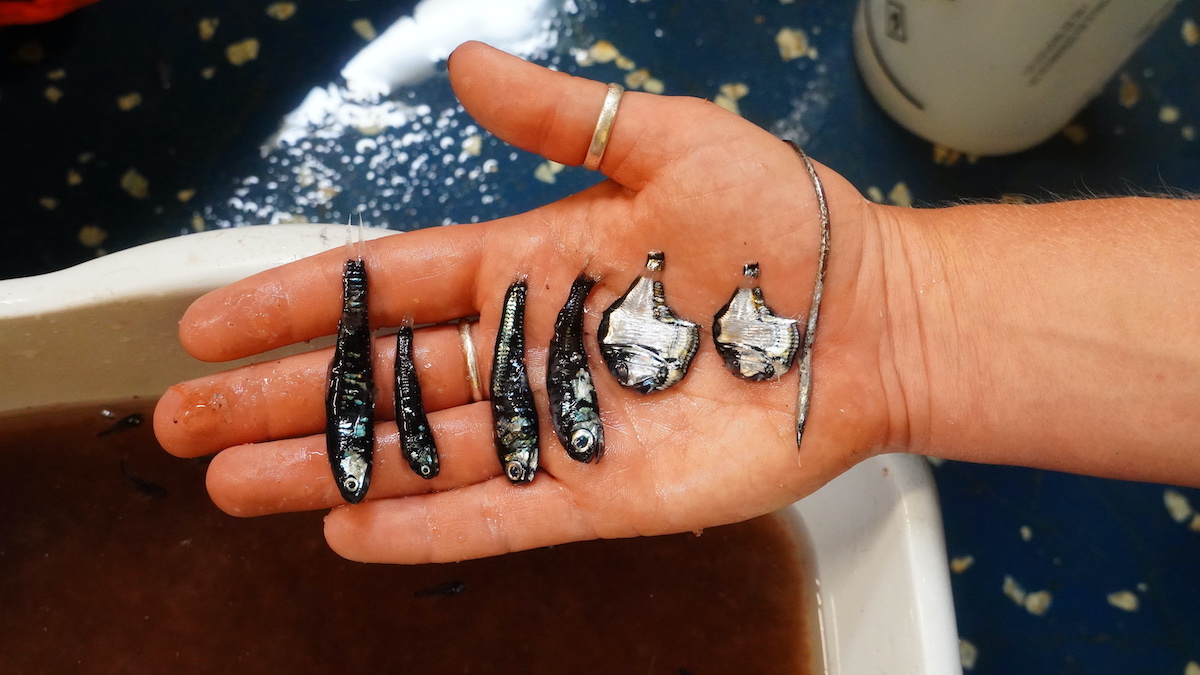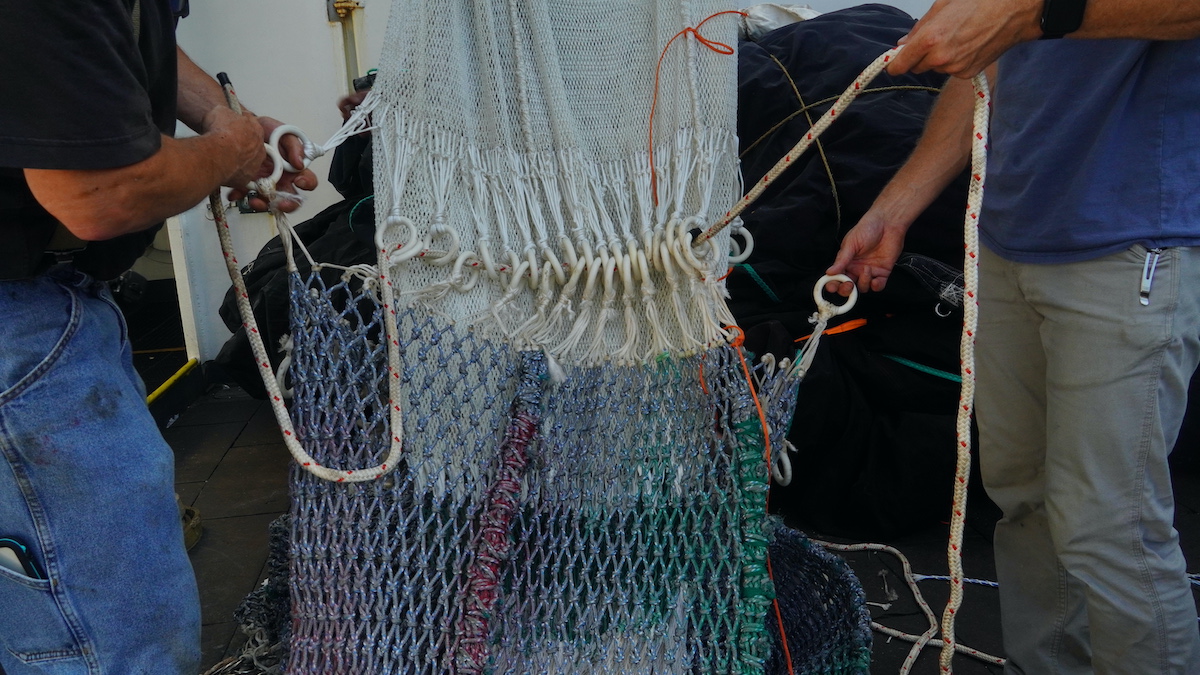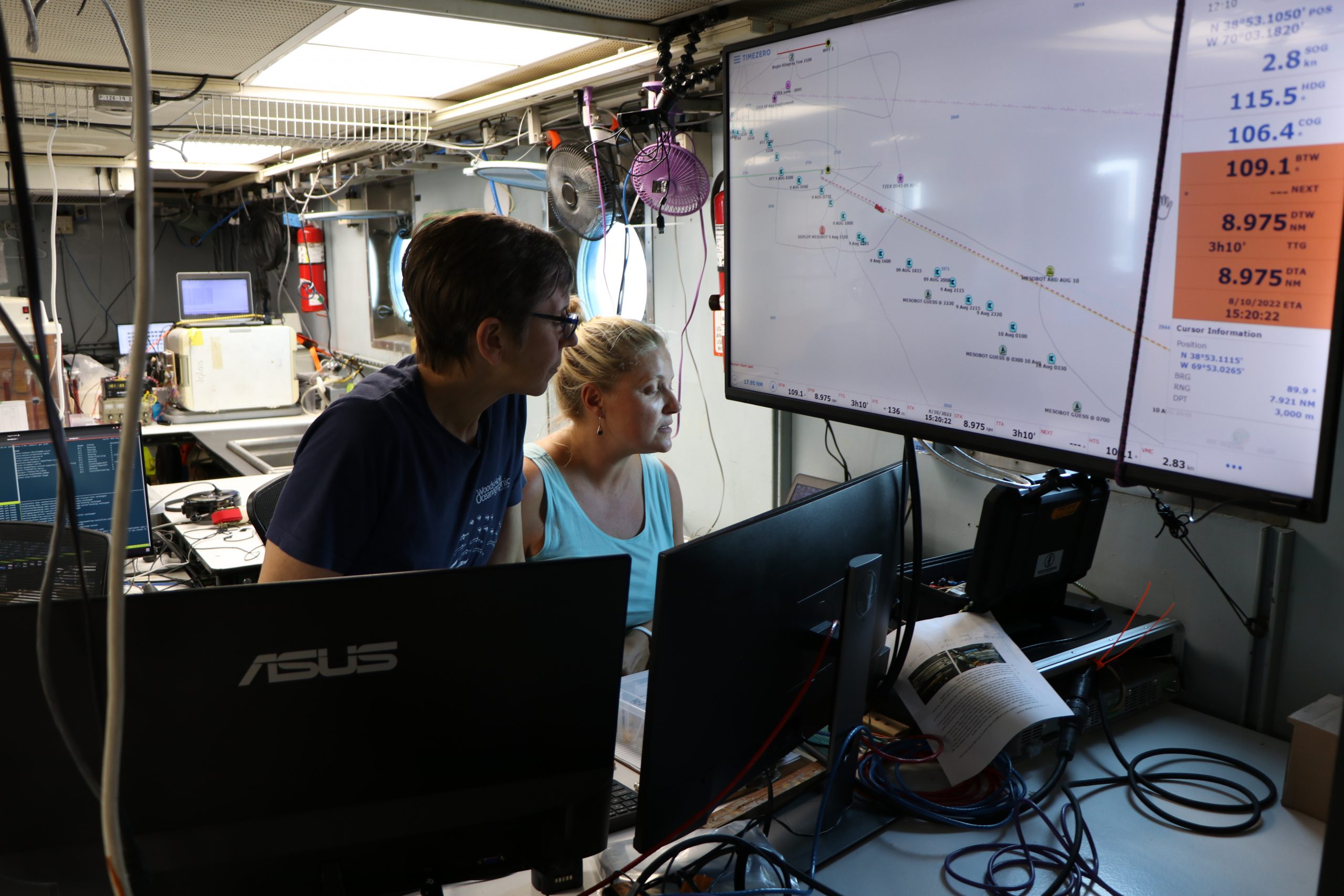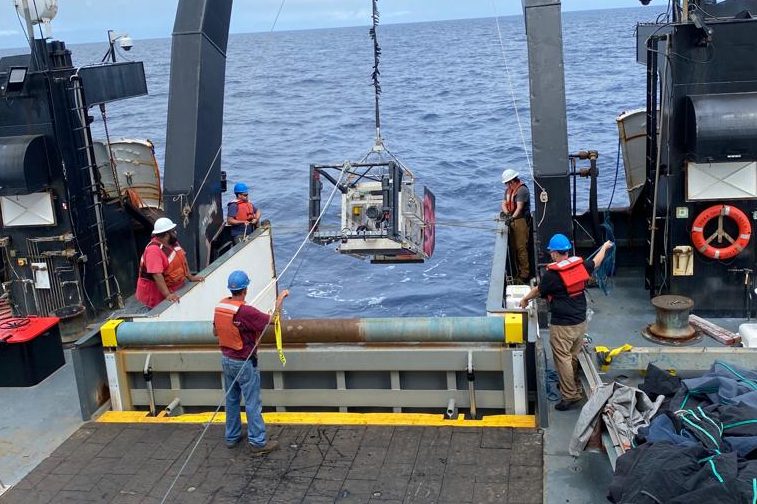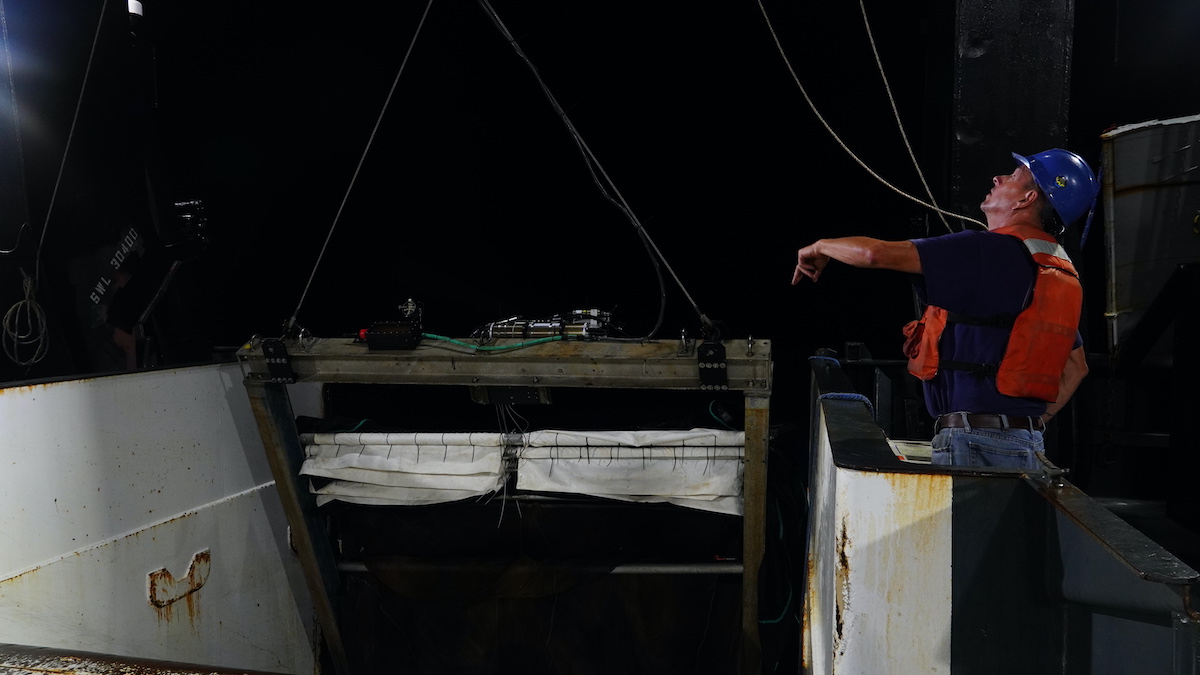Field Notes: Catching Light March 17, 2021
Since Mesobot arrived in Bermuda, it’s been taken apart, put back together, and exhaustively tested in both shallow and deep water. It bore witness to the largest migration on Earth, went for a swim through a soup of twilight zone creatures in the deep scattering layer, and was even inappropriately interrupted by a whale. But before the expedition ends, Mesobot needs to attempt another weighty task—to catch an isolume.
An isolume is a path through the sea along which the intensity of the light remains constant. To find one, just pick a place and time and then measure the light at your chosen spot, As the sun rises, your isolume will plunge into the deep, recoiling from the light of dawn. When the sun sets, it will sail back to the surface in search of moonlight, starlight, city light, or the milky glow of phytoplankton sated by a day spent cooking in the sun. These light levels are suspected to be one of the major factors that influence, and perhaps trigger, the migration of some twilight zone animals to and from the surface of the ocean. As the sun sets and light grows dimmer, many animals from the twilight zone follow that ever-dimming light to the surface. As the sun rises, they scuttle back to the safety of the twilight zone’s darkness.
But how can a robot catch light? Well, dear reader, if you’ve been following this blog, you know that Mesobot has just the tool for the job--a super slick, stunningly sensitive radiometer. With the help of this instrument, Mesobot can be programmed to follow, or “catch,” a specified light intensity, essentially letting it behave like a migrating twilight zone animal.
Mesobot’s radiometer is built around an ultrasensitive sensor called an “avalanche photodiode,” which, when hit by a single chunk of light, produces a burst (or "avalanche"), of electrical energy. By counting each avalanche and measuring its duration with nanosecond precision, the radiometer can calculate precisely how many photons hit the sensor every ten-thousandth of a second. Speed here is essential not just because the scientists are impatient (and they are, dear reader, they really are) but because it allows Mesobot to identify (and disregard) the brief but brilliant flashes of bioluminescence that are the largest source of luminous noise in the darkest reaches of the sea. A slow sensor gets the wrong answer.
How will Mesobot do? Stay tuned here for more updates.
—Jennifer Berglund, OTZ Field Correspondent







